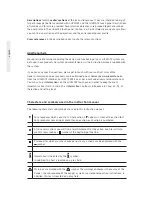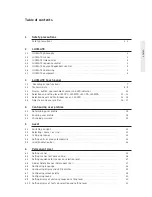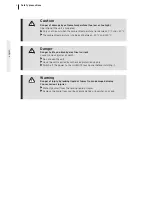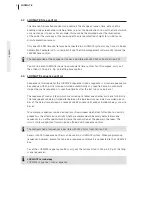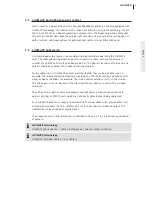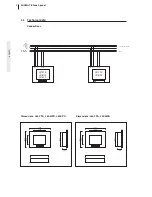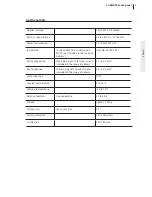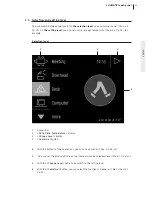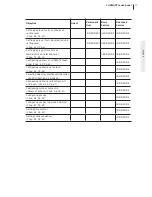
7
english
3 LUXMATE touch panel
This description contains information on the following topics. Cross references in the
description direct you to the relevant actions.
•
Advantages and functions
•
Technical data
•
Display, button, approachment sensor and LED indicator
•
Selection and setting level
•
Objectives and user profiles
•
Operating Several Rooms Together (LM-XPO)
3.1 Advantages and functions
Environmental conditions in a room can be quickly and easily changed using the LUXMATE
touch panel. Not only are the lighting conditions inside the room perfectly adjusted to one
another; the entry of light from outside can also be controlled. All of the factors in a room
which effect your activity and well being can be optimised.
For example, you can use the following functions:
•
Switching on display illumination (Chap. 6.6, Pg. 28)
•
Switching on light (Chap. 5.1, Pg. 21)
•
Selecting
> Come <
or
> Go <
(Chap. 5.2, Pg. 21)
•
Calling up scenes (Chap. 5.3, Pg. 22)
•
Setting units or groups temporarily (Chap. 5.4, Pg. 22)
Display, button, approachment sensor and LED indicator (Chap. 3.3, Pg. 10) provide for easy
operation.
You satisfy your objectives intuitively with the symbols and short texts of the selection and
setting level (Chap. 3.4, Pg. 11). You simply touch the desired options window or select from
the lists.
The concept of the LUXMATE touch panel is oriented toward the target groups and objectives.
The basis of design and structure of the software in the LUXMATE touch panel are the
objectives which you would like to satisfy with the LUXMATE touch panel. Your
action
objectives
are the prerequisite for the conception of the individual screens. Navigation is
oriented to your courses of action. The objectives of your actions are also located in the menu
of the LUXMATE touch panel. Several action objectives are grouped together for user profiles.
A description of the user profiles is contained in Chap. 3.6, Pg. 16 (Objectives and user profiles).
LUXMATE touch panel





